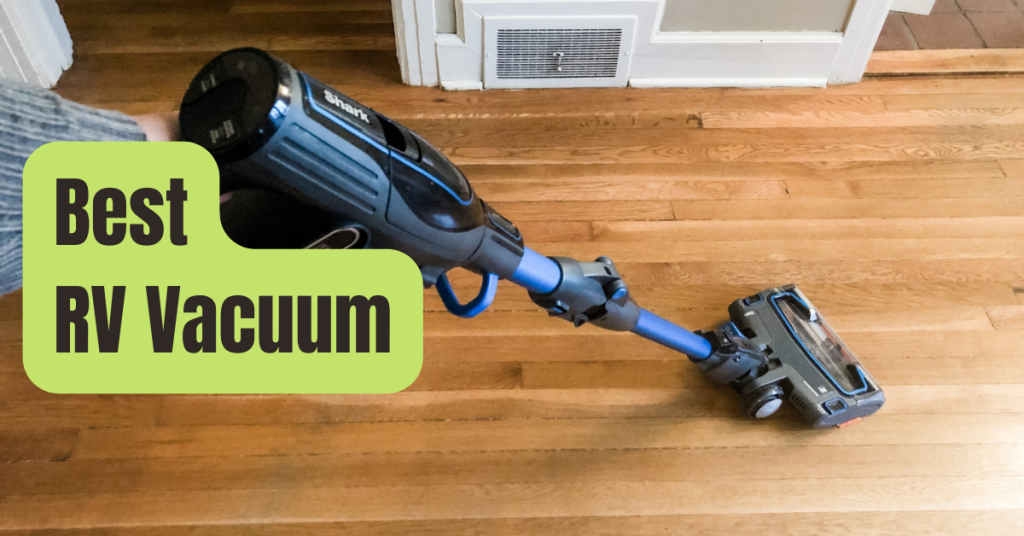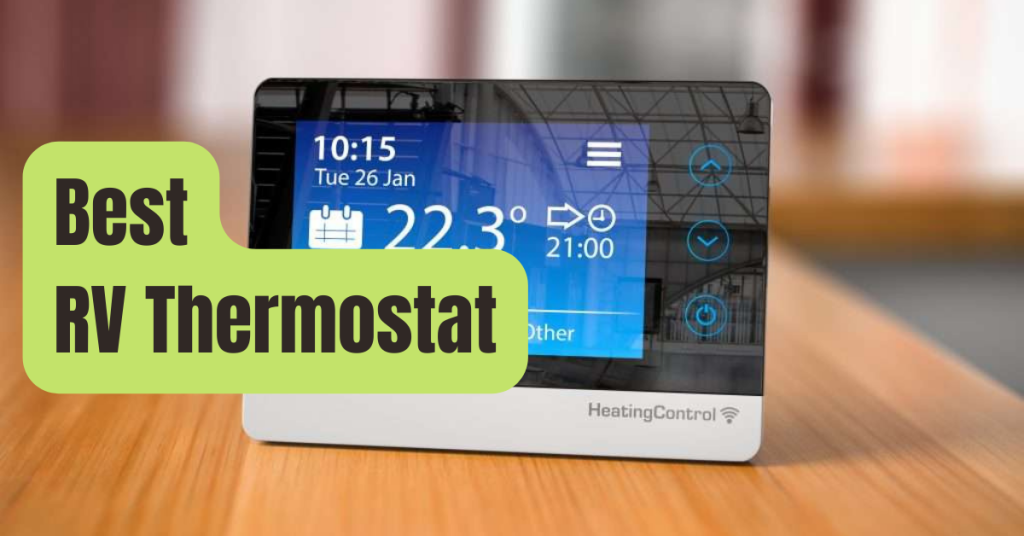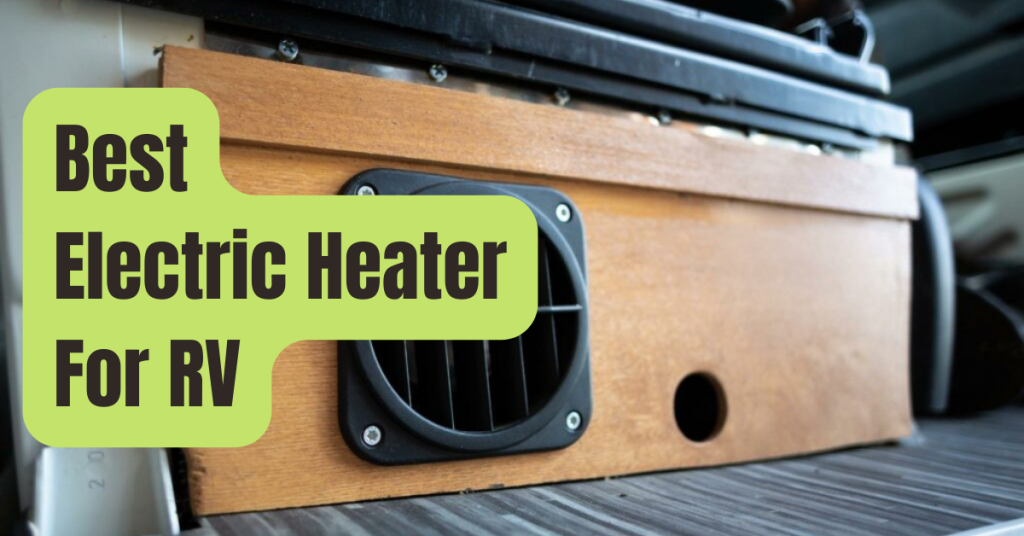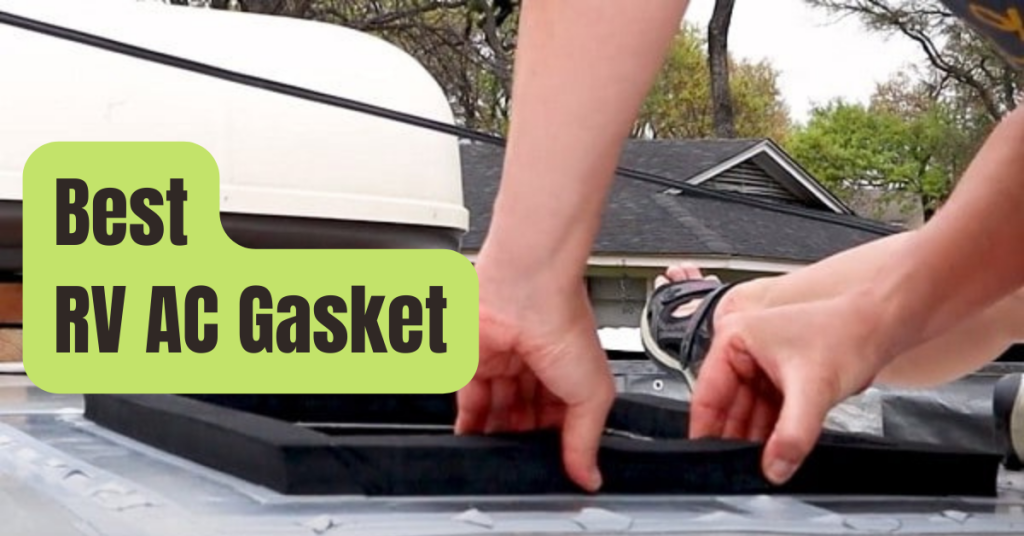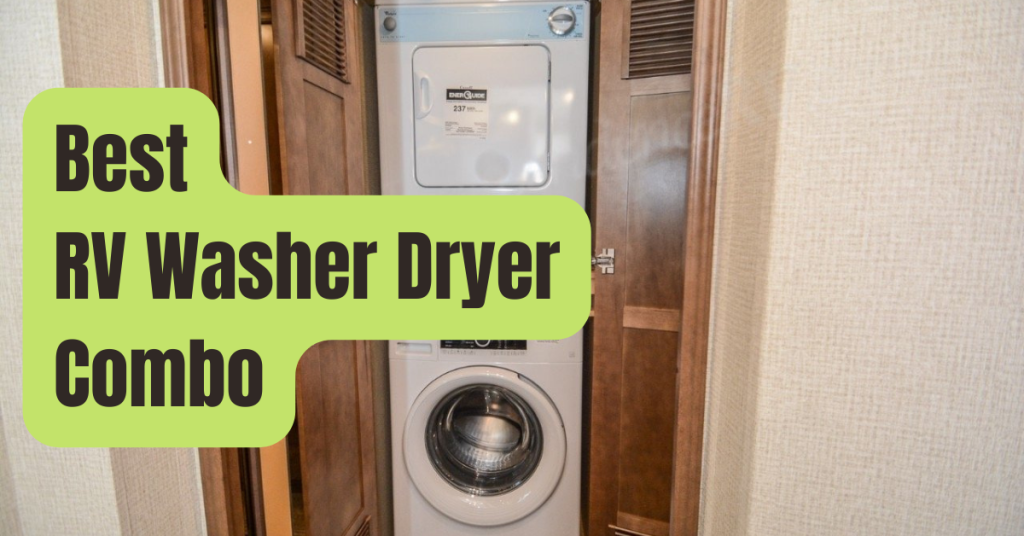Fold-out campers and tent trailers are other names for pop-up campers.
Because of their adaptability and simplicity, these lightweight trailers are becoming a popular option among campers.
Summer is in full bloom right now. It’s a good time for folks who like camping and own pop-up campers to go on a trip.
However, with such conditions, it’s difficult to enjoy a vacation without being impacted by the heat.
Pop-up camper air conditioners are a gadget RVers might consider purchasing for more pleasant camping outings on hot days.
We’ve assembled all you need to know about pop-up camper air conditioners, including various kinds of AC for pop-up campers and a hand-picked list of the top-performing pop-up camper AC units on the market today, to make it simpler for you to select the best one.
Best Pop Up Camper Air Conditioners Comparison Chart
| Featured | Product’s name | Key Features | More Info |
|---|---|---|---|
 | Dometic Brisk II Rooftop Air Conditioner, 15,000 BTU – Polar White… | Cooling Capacity: 15,000 BTU Dimensions: 27.6 x 29.6 x 13.9 Inches Weight: 77 Pounds | See Latest Price |
 | Coleman 48204C866 Mach 15+ A/C Unit | Cooling Capacity: 15,000 BTU Dimensions: 38 x 26.1 x 13.8 Inches Weight: 85 Pounds | See Latest Price |
 | Arctic King WWK05CM01N Window Air Conditioner, White | Cooling Capacity: 5,000 BTU Dimensions: 13.19 x 15.98 x 12.05 Inches Weight: 39.6 Pounds | See Latest Price |
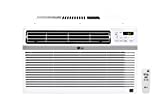 | LG 10,000 BTU 115V Window-Mounted Air Conditioner with Remote Control,… | Cooling Capacity: 10,000 BTU Dimensions: 22.20 x 23.62 x 15.00 Inches Weight: 73.0 Pounds | See Latest Price |
 | MIDEA EasyCool Window Air Conditioner, Fan-Cools, Circulates, and… | Cooling Capacity: 10,000 BTU Dimensions: 21.89 x 18.98 x 14.65 Inches Weight: 63.9 Pounds | See Latest Price |
 | BLACK+DECKER 5,500 BTU DOE (10,000 BTU ASHRAE) Portable Air Conditioner… | Cooling Capacity: 10,000 BTU Dimensions: 16.5 x 11.5 x 26 Inches Weight: 52.9 Pounds | See Latest Price |
 | ROLLICOOL Alexa-Enabled Smart Portable AC 10,000BTU — Cool Rooms up to… | Cooling Capacity: 10,000 BTU Dimensions: 14.2 x 16.5 x 28.4 Inches Weight: 62.0 Pounds | See Latest Price |
 | SereneLife SLPAC10 Portable Air Conditioner Compact Home AC Cooling Unit… | Cooling Capacity: 10,000 BTU Dimensions: 17.4 x 13.4 x 32.1 Inches Weight: 55.1 Pounds | See Latest Price |
Types of Air Conditioning for Pop-Up Campers
There are three kinds of RV air conditioners to consider if you haven’t already installed one in your pop-up camper: portable, window-mounted, and rooftop-mounted.
Each has its own set of benefits and drawbacks, which you must be aware of in order to choose the best air conditioner for your vacation.
| Rooftop Air Conditioner | Window Air Conditioner | Portable Air Conditioner | |
| SUMMARY | The rooftop-mounted air conditioner is the most popular and practical air conditioner for pop-up campers. This gadget resembles a box that mounts on top of the pop-up camper’s trailer. The air conditioner on the roof is likewise quite powerful. A single air conditioner can readily chill an area of 10 to 20 ft. | The window air conditioner, unlike the rooftop AC, is a portable AC unit that is fastened in the window. | This is the most recent of the three types. It resembles a tall dehumidifier with fans inside to keep the air circulating. The wheeled portable air conditioner may be positioned anywhere in the car. |
| PROS | + Powerful and efficient + Quiet operation + The ability to set a thermostat + No need to bother about removal when traveling | + It’s simple to set up + It doesn’t take up a lot of internal room + It’s quiet | + Economical + Transportable + Convenient + Energy-efficient |
| CONS | – Expensive – Installation and maintenance costs are high. | – When traveling, you must take off. | – Disturbing – Consume a lot of inner space |
Recommended reading: 8 Best RV Air Conditioners To Buy In 2026
#1. Air conditioning on the roof
Rooftop air conditioners are the most common and practical option.
They don’t take up any room, and you don’t have to take them out when you travel. They are effective and strong, with a large cooling surface.
They are quieter than window-mounted or portable air conditioners, which is beneficial to your sleep.
With such benefits comes a hefty price tag for acquisition, upkeep, and repair.
Rooftop-mounted air conditioners use a lot of electricity, therefore that’s part of the price.
Some pop-ups come with an air conditioning hole in the roof, but depending on the style you pick, you may need to make extra adjustments.
You may have to cut a hole yourself in certain circumstances. Another major drawback of rooftop-mounted air conditioners is their weight.
Even if your roof is weight-supported, the ACs strike your roof a little bit every time you travel on the road and your car bumps.
It will cause your roof to slump over time, necessitating roof supports, which will add to the cost of the ACs. Aside from that, you should be worried about the leaking issue.
#2. Window-mounted air conditioner
When it comes to pop-up camper air conditioning, this is a popular option.
They are not as inexpensive as portable units, but they are still affordable for the majority of people.
They need a little more setup than portable air conditioners, but they are still simple to install and can be completed entirely by oneself.
Window-mounted air conditioners have the compressor and fan outdoors rather than inside the RV.
They are also less loud as a result of this (but still noisy because the walls of pop-up campers are not very thick).
They may be plugged into normal wall outlets and are suitable for a variety of camping situations.
Window-mounted air conditioners are more powerful than portable air conditioners, although they are still not as strong as rooftop air conditioners.
You’ll have to take them off and put them back on if you want to travel, but that’s not a big deal since they’re so simple to set up.
#3. Use a portable air conditioner
This is a brand-new kind of air conditioner on the market.
They resemble tall humidifiers and are tiny, light, and portable (they have wheels).
This is the most affordable of the three kinds of air conditioners available for pop-up campers.
Because the room is limited, one portable air conditioner will do; you may use a fan to help circulate the chilly air.
There isn’t much installation necessary; all you have to do is locate a location for the vent line(s) and connect them in.
Portable RV air conditioners are the least expensive and most inefficient.
Because the compressor and fan are all in one spot, they not only suck out the heated air, but also a little cold air from outside.
Their capacity to cool is severely reduced as a result of this.
They made the air conditioners exceedingly noisy while they were operating, maybe disrupting your sleep.
Aside from that, they’ll take up valuable floor space, often near a window due to vent lines.
| Efficiency | Noise level | Installation | Price | Convenience | |
|---|---|---|---|---|---|
| Rooftop AC | Powerful | Quiet | Easy to remove yet hard to install | Expensive | Need roof support |
| Portable AC | Normal | Loud | Easy to install yet take a lot of space | More affordable | Portable & convenient |
| Window AC | Good | Quiet | Easy to install | Normal | Must take off when traveling |
The Best Rooftop Air Conditioners For Pop Up Campers
#1. Dometic Brisk II Air

- 13,500 BTU/Hour nominal capacity; Type of installation: ducted or non-ducted
- High-capacity motor and fan
- 115V AC, 60 Hz, 1 phase electrical rating
Why Do We Like It?
Dometic Brisk II Air is without a doubt the best pop-up camper air conditioner in its class, with big air apertures for excellent circulation and cooling.
The Dometic AC, with a capacity of 15,000 BTU, is capable of keeping the inside of a normal RV cool during summer excursions.
Brisk II Air also maintains its integrity on the road owing to the bespoke wrap-around shroud and carbon steel foundation.
Dometic Brisk II Air is a popular choice among full-time RVers looking for long-lasting air conditioners.
The Dometic unit constantly maintains noise to a minimum thanks to damping brackets, twin rubber bushings, and lengthy copper lines.
As a consequence, RV owners may enjoy the fresh breezes without having to deal with a noisy air conditioner.
Brisk II Air is also the all-time favorite model of eco-conscious consumers since it employs the ecologically beneficial 410A refrigerant.
Finally, and most importantly, the installation of Dometic’s Brisk II Air is quite simple, allowing you to set it up in the blink of an eye.
Dometic backs this air conditioner with a 2-year protection plus guarantee, which says much about the air conditioner’s performance.
Pros
- 10,000 BTU cooling capacity
- 17.4 x 13.4 x 32.1 Inch Dimensions
- 55.1 pound weight
Cons
- Quality control isn’t up to par.
- Some RVers claim to have received damaged units.
#2. Coleman 48204C866 Mach 15+ A/C Unit

- Capacity to cool/heat: 15,000
- Heating Output in BTUs (Delivered): 5,600
- 115V AC, 60HZ, 1 Phase electrical rating
Why Do We Like It?
Airxcel Mach 15 provides cold air at 320 cubic feet per minute, thanks to a 13 HP fan motor, one of the largest motors used in air conditioners.
That should be more than enough to keep most campers cool throughout the summer.
Mach 15’s heat dissipation is second to none thanks to the integration of high-quality evaporator and condenser coils.
The Airxcel unit is built to last with gas-flux brazed joints and all-copper tubing, allowing it to operate dependably in a variety of situations.
Airxcel Mach 15 is a wonderful companion for RV enthusiasts who wish to escape the heat in its original setup.
However, if you set the Airxcel heating assembly to Mach 15, you should be able to remain warm even in the colder months. In terms of price, the Airxcel air conditioner seems to be a high-priced model, and you’ll have to spend more if you want the heater component, which is an optional extra.
Nonetheless, the Airxcel Mach 15 is an excellent pop-up camper air conditioner with good values that RVers can rely on.
Because the Mach 15 comes with all of the necessary components, installing it on a typical recreational vehicle is a breeze.
Still, since Airxcel’s air conditioning is a little hefty, it’s a good idea to ask for help.
Pros
- Excellent warranty
- Exceptional cooling capacity
- Shroud made of aerodynamic materials
Cons
- High-priced and a little clumsy
#3. Arctic King WWK05CM01N

- Mini compact for small rooms, cools 150 square feet, 5, 000 BTU
- A combined energy efficiency rate (CEER) of 11.0 may help you save money on your energy bills.
- 7 temperature adjustments, 2 cooling and fan settings, 2-way air direction, and simple to regulate are just a few of the features.
Why Do We Like It?
Many RVers who own tiny pop-up campers like the Arctic King WWK05CM91N because it is compact and light.
Despite its low appearance, the Arctic King Air Conditioner can chill rooms up to 150 square feet.
WWK05CM91N ensures that people be comfortable on hot days by including a variety of fan and temperature settings.
Furthermore, the Arctic King WWK05CM91N is silent, so you won’t have to worry about disturbing others while using it.
The Arctic King Air Conditioner comes with mounting hardware and a handbook with full installation instructions.
It simply takes a few minutes to set up.
To ensure that the mounting screws go in easily, it’s highly advised that you drill pilot holes in the window frames beforehand.
Arctic King WWK05CM91N features a simple mechanical control dial that enables RVers to easily adjust its operations.
The Arctic King AC is popular among budget-conscious RV owners because of its low price.
The auto-restart function of the Arctic King WWK05CM91N is an unusual feature: if power is suddenly interrupted, the Arctic King Air Conditioner will immediately begin working under the original settings once power is restored.
Pros
- Lightweight
- A reasonable price
- Installation that is simple and intuitive
Cons
- Unpredictable results
- The compressor need some attention.
#4. LG 10,000 BTU Window Air Conditioner

- LOW NOISE PERFORMANCE: Works at sound levels as low as 52dB (in low mode), reducing unwanted noise.
- ENERGY STAR CERTIFIED: This Air Conditioner has met the energy star program’s stringent criteria by…
- MULTIPLE FAN Settings: You can tailor your cooling with three cooling and fan speeds, as well as auto cool.
Why Do We Like It?
LG 10,000 BTU Window Air Conditioner is designed to fulfill the Energy Star criteria established by the EPA (Environmental Protection Agency) and is genuinely unrivaled when it comes to power efficiency.
RVers who want to save money on their energy bills often recommend the LG Air Conditioner.
Furthermore, with a 10,000 BTU output, the LW1016ER has a large cooling area of 450 square feet.
As a result, LG LW1016ER should be able to keep campers cool even when the outside temperature rises to unbearable levels.
Adjusting the LG Air Conditioner to individual preferences is a snap thanks to the user-friendly remote.
In fact, you have complete control over temperature, fan speed, and other settings.
It’s also worth mentioning that a 24-hour on/off timer is included, making monitoring the LW1016ER’s runtime a breeze.
In terms of durability, the LG AC has a superior anti-corrosion coating, which is ideal for individuals who travel all year.
The filters of the LG LW1016ER are also washable, making maintenance a breeze in most circumstances.
LW1016ER can dehumidify the interior of your setup by removing excess moisture in addition to delivering cold air.
If you often travel through high-humidity areas, the LG 10,000 BTU Window Air Conditioner is the ideal pop-up camper Air Conditioner for you.
Pros
- Low-noise environment
- Flexible and adaptable
- Good price-to-value ratio
Cons
- Inadequate directions
- The service is poor.
#5. Midea 10,000 BTU

- Midea’s 3-in-1 technology combines air conditioning, dehumidification, and fan-only modes into one unit…
- FAST COOLING – This 10,000 BTU model cools and dehumidifies quickly and effectively, making it perfect for…
- INNOVATIVE FEATURES – A remote control with an intuitive design and an LED digital display screen will make it simple to…
Why Do We Like It?
Midea MAW10R1BWT is unrivaled in terms of versatility, integrating three functions (air conditioning, dehumidification, and fan) into one device.
MAW10R1BWT is a fantastic Air Conditioner that can keep people comfortable in a variety of weather situations.
Installation is a breeze since the Midea AC comes with all necessary mounting hardware.
There is also no need to make any significant changes to the window frames to accommodate MAW10R1BWT.
Midea’s Air Conditioner enables itself to switch off after reaching a defined temperature thanks to the EcoSave feature.
That is to say, by utilizing Midea MAW10R1BWT, you will save a lot of money while also protecting the environment.
The MAW10R1BWT also has a sleep mode that adjusts the temperature to follow your sleep cycle throughout the night.
Last but not least, the Midea AC is quiet, making it an excellent alternative for anyone looking for a quiet pop-up camper Air Conditioner.
Midea backs the MAW10R1BWT with a 1-year part and labor guarantee to reassure RVers of its quality.
If your Air Conditioner breaks down due to manufacturing faults during the warranty term, you may be eligible for a free replacement.
Pros
- Economical
- reliable and trustworthy
- Operation that is completely silent
Cons
- Customer service that isn’t up to par
- Some units come with shrouds that have been damaged.
The Best Portable Air Conditioner For Pop-Up Campers
#6. BLACK+DECKER 10,000 BTU Portable Air Conditioner

- QUIET AND POWERFUL – Our 6,000 BTU DOE (10,000 BTU ASHRAE) tiny Air Conditioner (16.5 x 11.5 x 26 in) will keep your home cool and comfortable.
- PERFECT FOR SMALL ROOMS – This floor-standing portable AC unit cools rooms consistently, quickly, and effectively…
- INSTALLATION IS EASY AND QUICK – Simply roll this portable Air Conditioner into any room equipped with a double hung or sliding door…
Why Do We Like It?
The Black + Decker BPACT10WT is praised by RVers, beginners, and veterans alike for providing quick and uninterrupted comfort.
Because it’s a portable AC, the BPACT10WT can be swiftly relocated to provide cool air while you’re inside.
The Black + Decker Air Conditioner maintains the temperature inside the RV consistent by providing steady and forceful airflows via vertical motion.
Furthermore, since it uses R410a as a refrigerant, the Black + Decker BPACT10WT is an ecologically friendly Air Conditioner.
The BPACT10WT comes with a full-function remote control that allows you to tailor its performance to your preferences.
The Black + Decker BPACT10WT’s running setting may be determined with just a look thanks to the LED display and symbols on the machine.
The Black + Decker Air Conditioner should be able to suit a broad variety of consumer needs with its cooling, dehumidification, and fan settings.
Because the BPACT10WT is also reasonably priced, it’s a good option for ordinary holidays.
The Black + Decker BPACT10WT has slide-out air filters that RVers can rinse and wash under the faucet for easy maintenance.
As a result, the BPACT10WT is an ideal pop-up camper Air Conditioner for individuals who dislike high-maintenance air conditioning.
Pros
- Affordable
- Profile that is slim
- Exceptional coverage
Cons
- Customer support that is unresponsive has been reported on occasion.
- Exhaust pipe with a short length
#7. Alexa Voice-Enabled ROLLICOOL

- Voice-activated room Air Conditioner with Wi-Fi capability can switch modes, control temperatures, and set timers.
- Small Air Conditioner cools and dehumidifies up to 275 sq. ft. of area, such as an apartment or bedroom.
- Not only does it work with Alexa, but it also works with our own ROLLICOOL app, which is available for iOS and Android.
Why Do We Like It?
Rollibot’s RolliCool COOL100H is a powerful and multifunctional Air Conditioner designed to fulfill the needs of contemporary pop-up campers.
The Rollibot AC outperforms the typical portable Air Conditioner in terms of cooling capability, with a cooling capacity of 10,000 BTU.
RVers may choose between air cooling, dehumidification, and fan settings at any time, depending on the weather.
Owners of campers have up to three alternatives for changing the operation modes: a remote, a smartphone, or voice control (Amazon Alexa).
The Rollibot AC is noted for its low environmental effect, thanks to its use of environmentally friendly R410A refrigerant and washable filters.
If you want to be green, consider adding the RolliCool COOL100H to your shopping list.
The RV-rated Air Conditioner from Rollibot has durable caster wheels for mobility.
Because of this, transporting the RolliCool COOL100H is a piece of cake.
The Rollibot unit, which is likewise composed of high-quality materials, can withstand bumps and vibrations without breaking.
The installation of the RolliCool COOL100H takes just a few minutes since Rollibot provides all components and hardware.
If you follow the directions in the handbook, cold air will quickly fill the inside of your vehicle.
Pros
- Sturdy structure
- Advanced and fashionable
- Outstanding handling characteristics
Cons
- Filter guards that aren’t fastened
- Window adapter that isn’t quite right
#8. SereneLife SLPAC10

- PORTABLE AND HANDY: The SereneLife Portable Air Conditioner System is designed with a lightweight, portable, and streamlined body…
- THERE ARE THREE OPERATING MODES: A simple electric plug in is included on the tiny floor AC indoor cooler conditioning unit…
- BUILT-IN DEHUMIDIFIER: The portable AC not only cools you down, but it also helps to decrease humidity…
Why Do We Like It?
SereneLife SLPAC10 is a tiny and slender pop-up camper Air Conditioner that is suitable for RVers who like to travel light.
In comparison to standard Air Conditioners for recreational vehicles, the SereneLife AC features outstanding portability thanks to the incorporation of high-quality rolling wheels.
The 10,000 BTU output of the SLPAC10 ensures that everyone within the RV is kept cool even on the hottest summer days.
SereneLife’s Air Conditioner has a low power consumption and is also cost effective to operate.
SereneLife SLPAC10 is especially well-suited for places with high humidity levels since it has a built-in dehumidifier.
The SereneLife AC inhibits the spread of allergies, mites, mildew, and other contaminants by eliminating excess moisture from the air.
You may monitor critical readings and make adjustments as needed using the unit’s computerized touch button control panel.
SereneLife SLPAC10 also comes with a convenient remote control so you can use it without getting up.
SereneLife even backs SLPAC10 with a market-leading 100 percent money-back guarantee as evidence of faith.
That implies you might request a refund if you discover SereneLife’s air conditioning to be insufficient for your camper.
Pros
- Cooling quickly
- Several options
- Controls that are simple to use
Cons
- When in use, it may be a little noisy.
- On sometimes, blow circuit breakers
What To Look For When Buying An Air Conditioner For A Pop-Up Camper
Overall, finding a pop-up camper Air Conditioner that suits your specific tastes is a snap if you know what to look for.
So, in order to make a profitable purchase, it’s critical that you keep these factors in mind.
#1. BTU
For your knowledge, BTU (British Thermal Unit) is a measurement of Air Conditioner cooling power: as the BTU rating grows, the quantity of heat eliminated climbs with it.
It’s critical to consider the size of your camper while determining the best BTU rating for your future Air Conditioner.
If you have a small setup, you may want to look for models with standard ratings.
If you have a large pop-up camper and want to keep cool, high BTU Air Conditioners are the way to go.
Recommended reading: Is it Possible to Get a 12V RV Air Conditioner?
#2. Consumption
It’s common knowledge among RV owners that when it comes to power-hungry equipment, Air Conditioners are often near the top of the list.
As a result, if you want to buy an Air Conditioner for your pop-up camper, you need consider power usage.
Having a strong Air Conditioner is useless if it uses excessive amounts of energy and leaves the rest of your setup weak.
So, before you go out and buy a certain model, be sure your recreational vehicle can handle it.
#3. Noise
While all Air Conditioners on the market create noise while in operation, it’s worth noting that certain models have lower noise levels than others.
As a result, if you want to enjoy cold air while still having peace of mind, you should select units that operate silently.
Air Conditioners in recreational vehicles with noise-reduction designs and sound-muffling materials usually function quietly.
Still, to be cautious, it’s a good idea to read customer reviews to see if there are any complaints concerning noise.
#5. Maintenance
To remain in functioning order, machines need to be inspected and repaired on a regular basis, and RV-rated Air Conditioners are no exception.
Of course, you may always take your recreational vehicle to a local auto shop and have the AC serviced by specialists.
As an RVer, you will most likely have a variety of expenditures to handle.
So, instead of spending money on a fancy conditioner that you’ll have to maintain yourself, why not save it for something more important?
#6. Price
Varied RVers have different thoughts about the expense of air conditioning: some choose to buy pricey units, while others seem to be OK with low-cost versions.
In general, unless you have first-class needs, there is no need to pay more for a premium Air Conditioner.
If you hunt around long enough, you should be able to find quality flats at reasonable pricing.
However, you should avoid dirt-cheap Air Conditioners since their makers sometimes cut shortcuts to keep the price low.
What Size Air Conditioner Do You Require?
Simply multiply the square foot size of your camper by 20 to get the number of BTU required to keep it cool.
This will help you reduce the number of units you need to inspect and save you a lot of time.
Of course, if you want to be extra cautious, you may raise the suggested BTU rating of the Air Conditioner somewhat.
Your pop-up camper, for example, has an overall dimension of 25 x 40 feet and a square foot area of 1,000 ft2.
Your recreational vehicle’s Air Conditioner should be rated at 20,000 BTUs (1,000 x 20).
How To Make A Pop-Up Trailer Air Conditioned
Because installation processes differ from model to model, it’s essential that you consult the owner’s handbook before installing an Air Conditioner in your camper.
However, if you need assistance, follow the procedures outlined below.
Note: Before installing the AC, turn off the power and unplug the battery to avoid any mishaps.
Step 1: Take the AC out of the box.
Overall, depending on the weight of the Air Conditioner, you may want to enlist the assistance of another person to assist you in removing it from the box.
Instead of placing the Air Conditioner on the ground, it’s a good idea to place clean cloths below it.
During the unpacking, keep a watch out for tubes, connections, wire, and other items.
Such components need precise handling: one misstep and the AC might face a slew of problems while in operation.
Step 2: Drill a Mounting Hole
Because Air Conditioners aren’t normally included with pop-up campers, you’ll need to cut a hole in your rig to accommodate one.
Before turning on your drill, examine the composition of the camper’s exterior to ensure the camper’s integrity.
It’s also a good idea to set up your RV on flat ground to reduce movement and increase drilling accuracy.
To get control of the situation, line up wood pieces in a straight line around the drilling location.
Step 3: Install Your Air Conditioner
It’s helpful to have a helping hand around when you slide the Air Conditioner and related components into your camper’s hole.
Drag the Air Conditioner as little as possible to avoid damaging the bottom end of the unit.
Place the Air Conditioner vertically so that the cable may fall inside your pop-up camper.
To return the Air Conditioner back to its original position, gently jiggle it until everything is how you want it.
After that, connect the power wire to the central socket and install the air distribution box.
Step 4: Examine the Wirings
To prevent messing up the wirings, follow the directions in the handbook when connecting AC components with appropriate wires.
Furthermore, when it comes to the lengths of the wires, be thorough: if you leave the wires overly stretched, they will quickly detach.
Aside from that, you should use insulating tape to cover all of the wire connections.
Exposed connections may lead to a variety of dangers for both you and your pop-up camper.
Reconnect the power supply in Step 5.
If you nail the wiring, your Air Conditioner is almost ready to use; all you have to do now is reconnect the battery and switch on the power source.
That stated, double-check the wiring, connections, sockets, and other components for any unusual indications.
If nothing seems out of the norm, turn off the power and breathe in the long-awaited fresh air.
Tips And Tricks For Operating An Air-Conditioned Pop-Up Camper
Look for Shaded Parking Spaces
Parking in the hot sun causes temperature spikes, forcing your Air Conditioner to work overtime to keep the inside cool.
If you want to save money on your power bill while also extending the life of your Air Conditioner, park your camper in a shaded area.
You won’t have to turn the thermostat all the way down to be cool if you keep your RV out of direct sunshine.
Change Air Filters on a Regular Basis
Over time, a variety of items may gather in Air Conditioner filters, obstructing airflow.
As a result, you should replace your air filters on a regular basis to ensure that your Air Conditioner performs at its best.
Consider Adding Insulation to the Interior
Today’s pop-up campers feature less-than-ideal insulation.
To get the most out of your Air Conditioner, insulate the inside to keep cold air in and hot air out.
Conclusion
There are many great Air Conditioners on the market for pop up campers.
It is important to do your research and find the best one for your needs.
Make sure to consider factors such as size, weight, and price.
And don’t forget to factor in your own personal preferences, such as noise level and features.
Ultimately, the best Air Conditioner for you is the one that meets your needs and fits your budget.
Happy camping!


